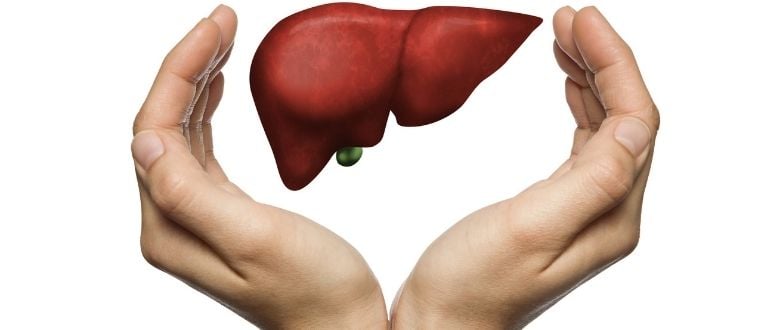Did you know that having prediabetes, diabetes or high blood pressure could put you at risk of developing a host of complications, including liver damage, with no obvious symptoms?
“People find it surprising to know that they may not experience any symptoms of liver damage until it progresses to a stage where it cannot be reversed,” says Dr. Mayank Uppal, Consultant, Internal Medicine at Sitaram Bhartia Institute of Science and Research.
According to the National Health Portal, about 9-32% of the population in India suffers from non-alcoholic fatty liver disease (NAFLD).
What is fatty liver disease?
Fatty liver disease occurs when excess fat gets accumulated in the liver because the body is unable to metabolize it properly.
It can happen in people who consume excess alcohol, called Alcoholic Fatty Liver Disease (AFLD) and even in those who don’t, called Non Alcoholic Fatty Liver Disease (NAFLD).
“In a healthy person, the liver usually contains some amount of fat, which it breaks down and converts into energy. It is when the accumulated fat becomes 5-10% of the liver’s weight that it causes concern.”
NAFLD includes two conditions:
- Non-alcoholic fatty liver (NAFL): in which fat has accumulated but causes nearly no inflammation.
- Non-alcoholic steatohepatitis (NASH): where the excess fat in the liver causes inflammation and can progress to scarring of the liver, resulting in liver cirrhosis.
Alcoholic Fatty Liver Disease refers to the accumulation of fat in the liver due to excess consumption of alcohol, which can even begin to occur over a span of a few days of heavy drinking.
How is fatty liver diagnosed?
The absence of any specific symptoms makes the condition difficult to diagnose unless liver damage shows up on tests advised for other medical conditions.
Recommended Blood Tests
Liver function tests (LFT) assess the functioning of the liver and its production of enzymes and proteins such as albumin. Low levels of albumin in your blood, for example, may indicate the improper functioning of the liver.
A special type of ultrasound, called elastography (Fibroscan®), may be suggested in case the blood tests indicate liver damage. This can show the extent of scarring and fat build up in the liver.
How is Fatty Liver Disease Graded?
Typically fatty liver grades (I,II, III) are determined by radiologists based on visible differences.
What is grade 1 fatty liver?
Grade I fatty liver occurs in the early stages where the fat is deposited outside the liver and does not interfere with its functioning.
People with grade I fatty liver exhibit no symptoms and usually learn about it either through routine ultrasounds or health check ups for other conditions.
“Since grade I fatty liver is a mild form of the condition, we recommend patients begin exercising and monitor their diet, abstain from alcohol and reduce the consumption of fatty foods,” says Dr. Mayank.
Is grade 1 fatty liver curable? Is grade 1 fatty liver reversible?
Yes, grade I fatty liver can be reversed provided you make the right changes to your diet plan, and incorporate exercise at least five times a week.
What should a person with grade 1 fatty liver eat?
You should eat a high fibre diet which includes green vegetables, whole fruits (rather than drinking just the juice as it does not contain fibre) and incorporate salads in your daily diet. Replace all refined foods and white carbohydrates such as refined flour (maida), white rice, white bread with other sources of carbohydrates such as multigrain/whole wheat flour, brown rice, legumes and nuts.
What is the treatment for grade 1 fatty liver?
Grade 1 fatty liver disease signals the onset of liver disease, which can be treated provided you follow a disciplined lifestyle that involves
- Losing weight: Studies show that losing 10% of your body weight can reduce liver fat, inflammation and may as a result, lessen scarring of the liver. Rapid weight loss, however, may be detrimental, which is why you should consult your physician about your weight loss plan.
- Eating right: Ensure your fatty liver grade 1 diet plan incorporates vegetables, beans and legumes. Focus on replacing unhealthy and fatty foods with healthier alternatives. You could switch to olive oil instead of mustard or canola oil and consume fruits and nuts in between meals to curb hunger pangs.
Read: Go Nuts for a Healthy Heart!
- Managing diabetes: People with diabetes should plan their diets in consultation with a diabetes educator to prevent a spike in their sugar levels. Check your blood sugar levels and record your readings as advised. “If you’re uncomfortable with repeatedly pricking yourself, you can avail the option of continuous glucose monitoring, through which a small circular device is inserted into your shoulder. The device tracks your glucose levels and reports a profile of your readings that are to be checked by your primary physician or an endocrinologist every two weeks.”
Also Read: Diabetes Check ups: 4 Reasons Follow ups are Essential
There are no specific medications for the treatment of grade 1 fatty liver. Fatty liver grade 2 and grade 3 require proper treatment because they are relatively more serious forms of the condition.
Conclusion
Fatty liver is a condition brought about by lifestyle choices. Modifying these choices and making wiser decisions, though sometimes difficult to achieve and maintain, is the only way to prevent worsening of the condition.

Medically Reviewed by Dr. Mayank Uppal
Consultant, Internal Medicine
MBBS, GSVM Medical College, Kanpur (2006); DNB (Medicine) -VMMC & Safdarjung Hospital, New Delhi (2011
Experience: 10 years
Please click the button below to schedule an appointment with him today!
Liked this article? Follow us on Facebook, Twitter, Youtube and Instagram for more content!
More Resources:



